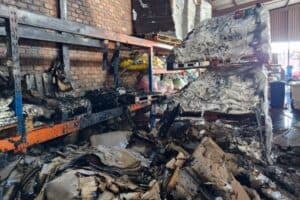The festive season is unfortunately coupled with dangerous roads. Knowing what to do if you happen to arrive first at the scene of an accident may give you some peace of mind.
Being a hero may not be what you pictured this festive season, but the course of action you take if you happen to be the first to arrive at an accident scene could mean the difference between life and death – both for you and the victim.
However, coming across an accident wreck does involve more than jumping in to save people, or standing by and doing nothing. It requires you to analyse the scene and make rational, safe decisions. There are different protocols for different situations, which must be adhered to if you want to help and stay safe.
Stop
If you come across an accident, it is advised to stop only if it is possible to do so, at a safe distance from the accident scene. Ensure that you turn your hazard lights on, and put a warning triangle at a fair distance from the scene, to warn other motorists of the possible danger ahead. This will allow them enough time to slow down and. While doing this, ensure that you are safe – you will not help the situation if your safety is compromised, or if you run the risk of injuring yourself.
Picture: Thinkstock
Observe the scene for possible hazards
Hazards related to the accident scene could include fuel leaks from the car, which could cause a fire, as well as oncoming traffic, dangerous animals or hostile bystanders. Make sure to stay away from these dangers as much as is possible. If possible and necessary, switch off the ignition of the car involved in the accident, to further reduce the risk of a fire.
This morning’s accident on Christiaan de Wet Road. (Photos: Supplied)
Assess if there are people injured
If there are injured victims involved in the accident, call emergency services for help. Ensure that the operator has your number and location, as well as a brief description of the scene and the state of the victim, in case you are in an area with limited signal and your call gets cut.

ER24 respond to dog attack. File image
Helping the injured
Only move an injured person if it is absolutely necessary – for example, if they are obstructing traffic. This is because the victim may have spinal or neck injuries. Rather stay with the victim and keep them calm and reassured. Next, cover the victim with a coat or blanket to help with shock. Shade them from the sun or rain, ensuring they are as comfortable as possible.
Accident. Picture: ER24
If the victim is not breathing or is concussed
Only attempt mouth-to-mouth resuscitation or CPR if you are trained in it. If not, rather wait for emergency services personnel to get to you. In the meantime, keep talking to the victim to keep them encouraged. If the victim is concussed, it is best to keep an eye on their breathing and to stay with them until the ambulance arrives.

Two taxis collided on the N4 yesterday
If the victim has a bleeding wound
If the victim has a serious wound, make sure to compress the flow of blood by using a towel or piece of clothing. However, if they have a head wound, ensure that you use light pressure on the wound. Do not touch an open wound or bodily fluids. If there is a foreign object impaling the victim, do not attempt to remove it – it will only make the bleeding worse.
WOUNDED. An Ethiopian man is taken to an ambulance after he was hit on the head along Pixley kaSeme Street in Durban while he was on his way to a prayer vigil at the City Hall. Picture: Phumlani Thabethe
Arriving at an accident scene, whether you are the first or simply a bystander, is a frightful, stressful and disturbing experience for anyone. Always remember, your main task is to help protect the victim, and not to treat their injuries. The above steps may seem insignificant, but prioritising your safety and doing what you can is more than satisfactory. Emergency services will provide the rest.
Sources: Road & Travel Magazine, News24
For more news your way, follow The Citizen on Facebook and Twitter.






